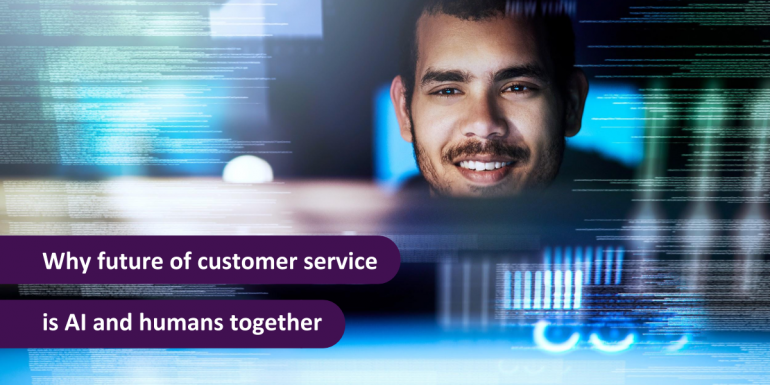Why the future of customer service is AI and humans together

Since AI moved center stage, commentators have been queuing up to voice their concerns about its negative impact on people and jobs. Many experts paint a picture of human customer service agents being replaced by the likes of chatbots and smart assistants.
It is true that consumers are keen to embrace these new technologies: Eptica’s research reveals that over half (54%) of UK consumers would like to use intelligent voice assistants, such as Amazon’s Alexa Google Home and Siri from Apple, to interact with brands.
However, the research also suggests that consumers want a balance, using the best channel or technology for their particular need. Different channels have their own strengths – for example, email provides a full audit trail and doesn’t bring the pressure of a real-time conversation over chat or the phone. Consequently, 27% of customer service queries still come in via email and 17% by phone, despite these being amongst the longest established channels. AI will not mean that they disappear.
Augmenting your agents
In fact, human agents will continue to play a central role in customer service. Gartner believes that while the share of customer service interactions handled by technology will rise (from 49% in 2017 to 85% in 2022), human interactions will not fall by a corresponding proportion. It predicts that by 2022, 36% of interactions will still involve humans, either working independently or as augmented agents with support from technologies such as AI.
This is echoed by recent research from Forrester, which calls for businesses to start designing the human-machine workplaces of the future now. The report suggests that the goal for every company should be to create employee experiences which ensure that humans can thrive when they work alongside robots and AI.
Forrester’s report sets out three principles for creating future employee experiences that incorporate AI.
- Use AI to free humans from routine work so they can focus on more important tasks
- Adapt AI to humans, not forcing humans to AI
- Make humanness a strength. For example, a human should be given the power to judge whether something suggested by AI natural language processing doesn’t make sense - and be able to overrule the AI
Applying these principles to customer service, it’s vital that you ensure you are using AI in ways that aid and support agents. Here are four ways to help make this a reality:
1. Use AI to deflect routine queries
Consumers want fast answers to their basic questions – and don’t necessarily want or need to interact with an agent to get a response. AI-based self-service and chatbots can deliver on this need, using text analytics to understand the context of questions, and consequently providing more accurate answers. What is key is to make it easy for consumers to escalate from these automated channels to ones involving an agent, for example, if the conversation becomes more complex and requires human intervention.
2. Empower agents using AI
Consumers express themselves in a variety of ways, using different terms, language and even slang. This can be hard for agents to understand, meaning they don’t provide a relevant answer to the query. You can address this issue by using AI-based technology to automatically scan incoming digital interactions and empower agents by presenting them with recommended answers and information to address the customers’ needs.
3. Make listening more complete
Most brands use Voice of the Customer (VoC) data and surveys to increase their consumer insight. However, simply focusing on asking for feedback misses out on the 80% of data that lives in unstructured formats such as email. By combining AI and text analytics brands can analyze and draw insights from this vast and growing pool of unstructured information. This gives a deeper understanding that can be used to both address issues, closing the loop and better meeting their needs.
4. Let agents focus on emotion
On digital channels which lack the context of face-to-face or voice communication, it can be difficult to understand and build an emotional connection. Consequently, consumers often complain that agents don’t empathize with their situation, failing to spot and respond accordingly when they’re angry or upset. However, using AI digital communications can be analyzed for factors such as context and emotion, enabling agents to provide personalized empathetic replies. This empowers agents and lets them focus on the human, emotional side of conversations, playing to their strengths.
Building a connection with customers in this way is extremely powerful. While people may not remember the mundane details of an interaction with a brand, they do remember how you treat them at key moments in their journey.
The doom-mongers who claim that AI will make human customer service agents redundant are very wide of the mark. In fact, every introduction of a new customer service channel has actually increased the number of queries. Demonstrating this, 48% of consumers have increased the number of contacts they have with brands, compared to five years ago, while 16% more than doubled their number of interactions. Brands, therefore, need to heed Forrester’s words and plan for a balanced, blended future when it comes to customer service.






